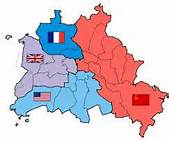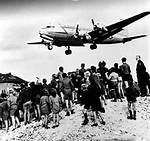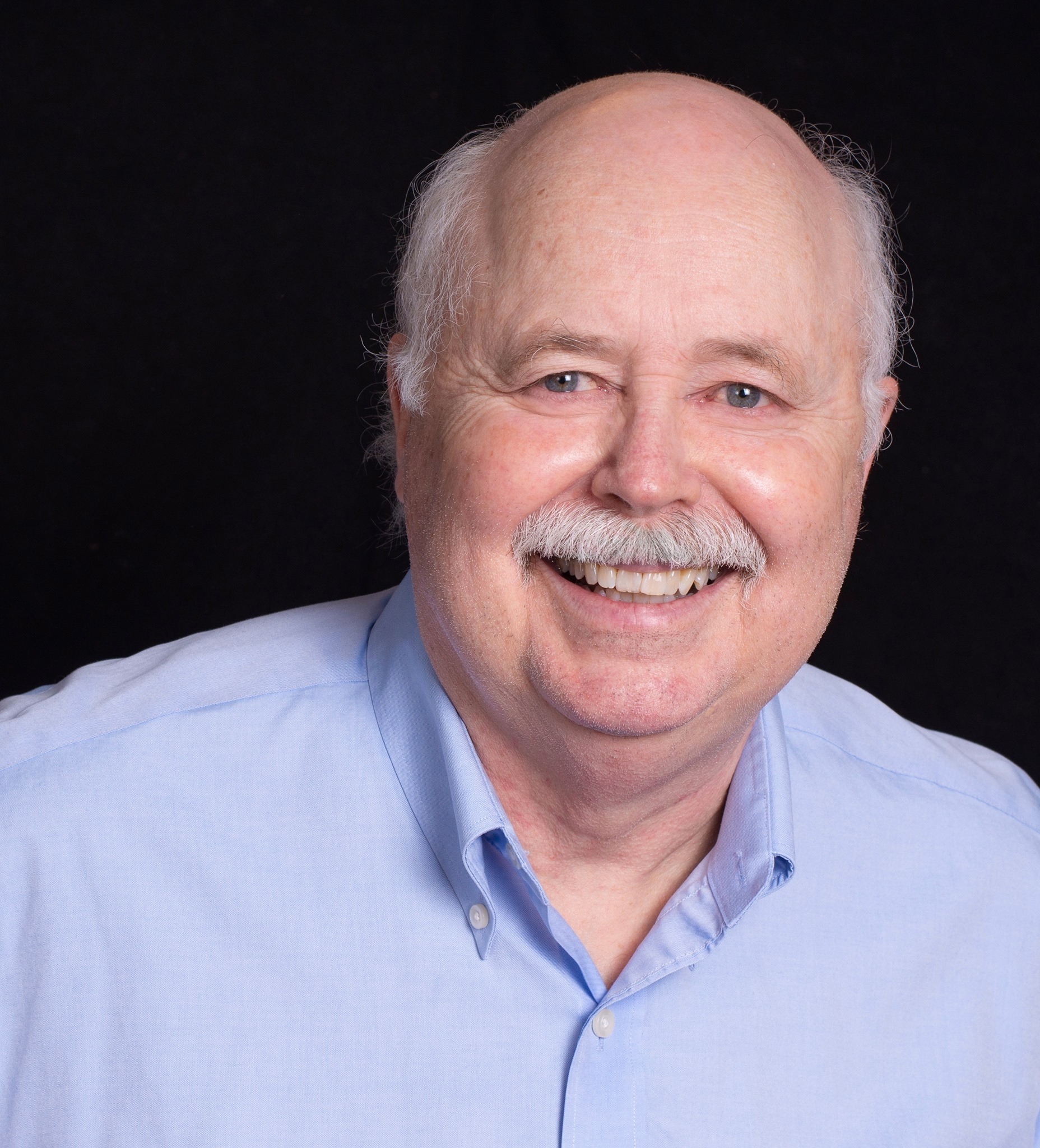
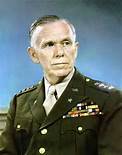
In early 1948, as part of their plan, the Western Allies decided to introduce a new currency into their sectors of Germany and Berlin. Since the war had ended Germany had largely been operating on a “chocolate and cigarettes” barter system and a functional currency was vitally needed to get the country going. The Soviets were not brought into the loop on this new currency, however, and so viewed it as a threat. The Russian people and country had suffered greatly at the hands of Germany and the Russian leader Joseph Stalin was not particularly interested in a revitalized German nation. As well, a relatively strong currency in West Germany and Berlin would undermine potentially what the Soviets were doing economically in their sectors in the East. Their response in the spring of 1948 was to start disrupting traffic to and from the portion of Berlin controlled by the Western Allies. After several interruptions of traffic and also of electricity and water, in late June, 1948 Stalin finally ordered a full scale blockade of the Western Allied sectors of Berlin, cutting all road and railroad access as well as water routes to and from the city, thus cutting Berlin off from the rest of the world. Stalin was hoping to force the Western Allies to give up on Berlin and leave it to the Soviets. The U.S. Commander in Berlin, General Lucius Clay, responded by ordering what has become known to history as the Berlin Airlift, by which the needed supplies for the western sector of Berlin were airlifted in to the city. The Berlin airlift was a massive operation that went on for nearly a year, peaking in April of 1949 with nearly 1400 flights made to West Berlin delivering 12,000 tons of supplies in a 24 hour period. Witnessing this, in May of 1949 the Soviets finally gave up on the blockade and the Berlin Airlift came to an end. Not so the Cold War stresses and confrontations regarding the city of Berlin, however.

The Berlin crisis was precipitated in August of 1961 when Russian Priemier Nikita Khrushchev ordered that a wall be built between Soviet controlled East Berlin and French, U.S. and British controlled West Berlin. East Berliners had been fleeing to the West for some time and Khrushchev wanted to stop the flow. Ironically, shortly after this Kennedy sent as his personal representative to West Berlin retired General Lucius Clay; the same Lucius Clay who had orchestrated the Berlin Airlift 12 years earlier. Almost immediately Clay escalated the crisis by ordering the U.S. military commandant in West Berlin to have his engineers build a duplicate of a section of the Berlin Wall in a forest. U.S. tanks equipped with bulldozer attachments then practiced destroying it. General Bruce Clark, the commander of all U.S. forces in Europe, on discovering what Clay was doing ordered it stopped. He challenged Clay to call the President and talk to him about it if he did not like the order. Clay declined to make the call and neither man ever informed Kennedy of Clay’s aborted wall destruction exercises.
Khrushchev, on the other hand was informed almost instantly of the wall bashing being done by the U.S. tanks in the forest. The exercises were witnessed by Soviet spies who forwarded reports and pictures to Moscow. As a result Khrushchev and his advisers immediately made plans to be ready should the Americans move to take down the wall. That moment came in October when a flap took place over East German refusal to let an American official back into West Berlin through a checkpoint in the wall known as “Checkpoint Charlie”. That was all the prompting Lucius Clay needed. On October 27, ten American bull- dozer mounted M-48 tanks made their way to Checkpoint Charlie, only to be confronted almost instantly by ten Soviet tanks that had been waiting in side streets for just such a moment. The Soviets had used their advance notice and prepared well. Soon twenty more Soviet tanks arrived on the scene and the Americans brought up twenty more of their own. For the next sixteen hours the Soviet and American tanks confronted one another almost muzzle to muzzle in a tense standoff.
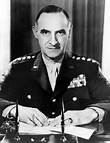
I was in 5th grade at Shorewood Elementary School in Seattle, Washington when all of this was happening in Berlin in October of 1961. I vaguely remember hearing about it on the news and being concerned about the threat of nuclear war. (The Cuban Missile Crisis of the following year is a much clearer memory to me actually.) My childhood fears notwithstanding, most of us in the United States today have no idea how close we came to actual nuclear war as a result of what occurred in Berlin in October ’61. Much later Khrushchev’s foreign affairs advisor, a man named Valentin Falin provided some insight. Falin was beside Khrushchev through the entire crisis. He reports that had the U.S. tanks advanced any further the Soviet tanks would have fired on them and events after that very likely would have escalated out of control. In Berlin in October of 1961 we were that close to disaster.
On getting the reports of what was occurring in Berlin an alarmed Kennedy employed a back channel communication line that he and Khrushchev had decided to set up at their Vienna summit earlier in the year. (The line was to be private and unofficial, bypassing the customary state to state formalities. Khrushchev had first used the line in September ‘61 prior to JFKs first address to the United Nations to express hope that he and Kennedy could set up a summit to address the tensions building regarding Berlin. Kennedy had responded that he would be open to the summit but first wanted a Soviet demonstration of good faith regarding the agreements made on Laos at the Vienna summit in June. The Kennedy/Khrushchev back channel line involved a message delivered by a trusted aide to a trusted aide. For Kennedy, in the case described above, that aide was his Press Secretary Pierre Sallinger. For the Berlin Crisis it was Robert Kennedy) JFK had his brother Robert deliver a message to Soviet press attaché Georgi Bolshakov for relay to Khrushchev. The message said that if the Russians would withdraw their tanks within 24 hours the Americans would do the same 30 minutes later. Kennedy then ordered Lucius Clay to prepare to carry out the American side of the withdrawal. The next morning the Soviet tanks withdrew followed shortly by the Americans and the Berlin Crisis came to a close.
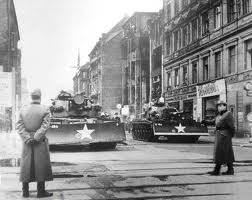
By a whisker JFK had once again averted war.
The crisis in Berlin was resolved for the moment, but a question remains: why did Khrushchev trust that Kennedy would do as he promised in withdrawing the U.S. tanks if the Russians withdrew their tanks first? Why did he not insist that the Americans withdraw first? The answer to this is grasped when one realizes that Khrushchev apparently understood that Kennedy, if anything, was under more pressure from his military and intelligence people than he (Khrushchev) was. Because of their secret communication in September and because of JFK’s subsequent address at the U.N. which spoke hopefully of peace, Khrushchev thought he and Kennedy had been making progress on Berlin. He strongly suspected, therefore, that in Berlin, as well as other crisis zones, JFK was being undermined. By withdrawing first he gave Kennedy the “out” he needed to defuse the crisis.
Khrushchev, as we shall see, was tragically and uncannily accurate in his assessment that Kennedy was being undermined.
